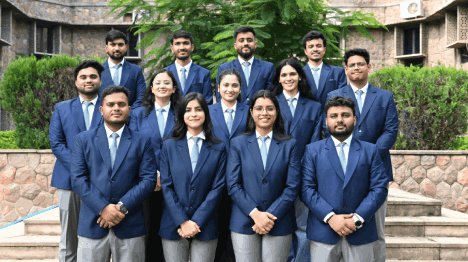- About Us
- Academics
Schools
Programs
General Information
- Faculty
The faculty members and researchers working at IIHMR University come from varied backgrounds including, but not limited to medicine, public health, management, economics, statistics, demography, human geography, social and behavioral sciences, rural development and pharmaceuticals.
- Admissions
- Research
.Publications & Journal
- Executive Education
Executive Programmes
- Online Certification Courses
ONLINE CERTIFICATION Courses
- Training
- Placements
- Fee Payment
- NAAC
- IQAC
- NIRF
- Webinars
- About Us
- About IIHMR University
- Board of Management
- Academic Council
- Board of Studies
- Research Board
- Institutional Review Board
- Finance & Audit Committee
- Departmental Research Committee
- Chairperson's Message
- President's Message
- IIHMR University Act
- Infrastructure
- Collaboration
- Ranking
- Board of Studies (School of Digital Health)
- Awards & Accolades
- Academics
- Institute of Health Management Research
- School of Pharmaceutical Management
- School of Development Studies
- School of Digital Health
- SD Gupta School of Public Health
- MBA (Hospital and Health Management)
- MBA (Pharmaceutical Management)
- MBA (Development Management)
- MBA (Healthcare Analytics)
- Master of Public Health
- Student Manual – Cohort 9 (2021-2023)
- Master of Public Health (Cooperative programme with Johns Hopkins University)
- Ph. D.
- MBA CSR & ESG Management (Executive)
- MBA Sustainable Business Management (Executive)
- Common Information for all the Programs
- Academic Calendar
- Student Handbook 2020-21
- Committees
- Policies
- Annual Exam Calendar
- Library
- Faculty
- Officers of University
- Dean of Institute of Health Management Research
- Dean of School of Pharmaceutical Management
- Dean of School of Development Studies
- Dean of SD Gupta School of Public Health
- Dean of School of Digital Health
- School of Digital Health
- Faculty List A to Z
- Faculty List Designation Wise
- Faculty List School Wise
- Admissions
- Research
- Executive Education
- Training
- Placements
- Alumni
- Events
- Job Openings
- Contact
- Research
Quality Assessment of Services under Janani Suraksha Yojna in Rajasthan
Agency : Directorate of Medical & Health,GoR
Rajasthan is one of the states classified as a Low Performing States (LPS) as well as Empowered Action Group (EAG) state in the context of demographic and health status. It is therefore focusing on the improvement of maternal health particularly the increase in institutional delivery. ]anani Suraksha Yojna (JSY), a Pan-India Safe Motherhood Intervention Project under the National Rural Health Mission (NRHM) has led to a remarkable increase in institutional deliveries and the Department of Health and Family Welfare, Government of Rajasthan has reported that the trends in institutional deliveries in the state over the years have shown an increase up to 80 percent
With the availability of services, quality of services is equally important. From this point of view, the present study was conceived to assess the quality of services provided under JSY with the overall objective of assessing the quality of services at the institutional level in terms of access, availability, continuity, technical and managerial competencies of staff, facilities and amenities, and satisfaction of the JSY beneficiaries with the services. Specifically, the objectives were:
- To conduct facility assessment of the selected 24X7 CHCs (FRU) and PHCs for the availability and functionality of health services under JSY
- To conduct assessment of the competencies and skills of the healthcare providers at the selected health facility with respect to multi-skill training.
- To assess the process of service delivery for the mother and the newborn.
- To assess the process of monitoring and supervision of the process of service delivery under JSY
- To study the status and feasibility of model sub-centers with respect to desirability of institutional deliveries.
- To study the status of the private sector with regard to the adherence to accreditation norms for institutional deliveries
- To study the perception and satisfaction of beneficiaries with JSY at the institutional level
- To suggest measures for improving institutional quality
Two FRUs and two 24X7 PHCs including all sub-centers corresponding to the selected PHCs were chosen for data collection from each of the three districts visited by the team. The report included findings and recommendations to ensure quality of services. In addition to the government health facilities, two accredited private health facilities were also included from each of the districts. Individual factsheets for each of the visited facilities were prepared on the indicators, which were assessed as part of the study.



